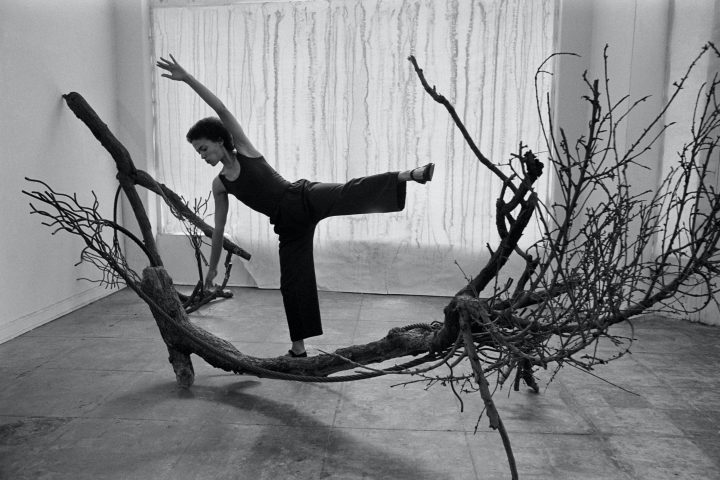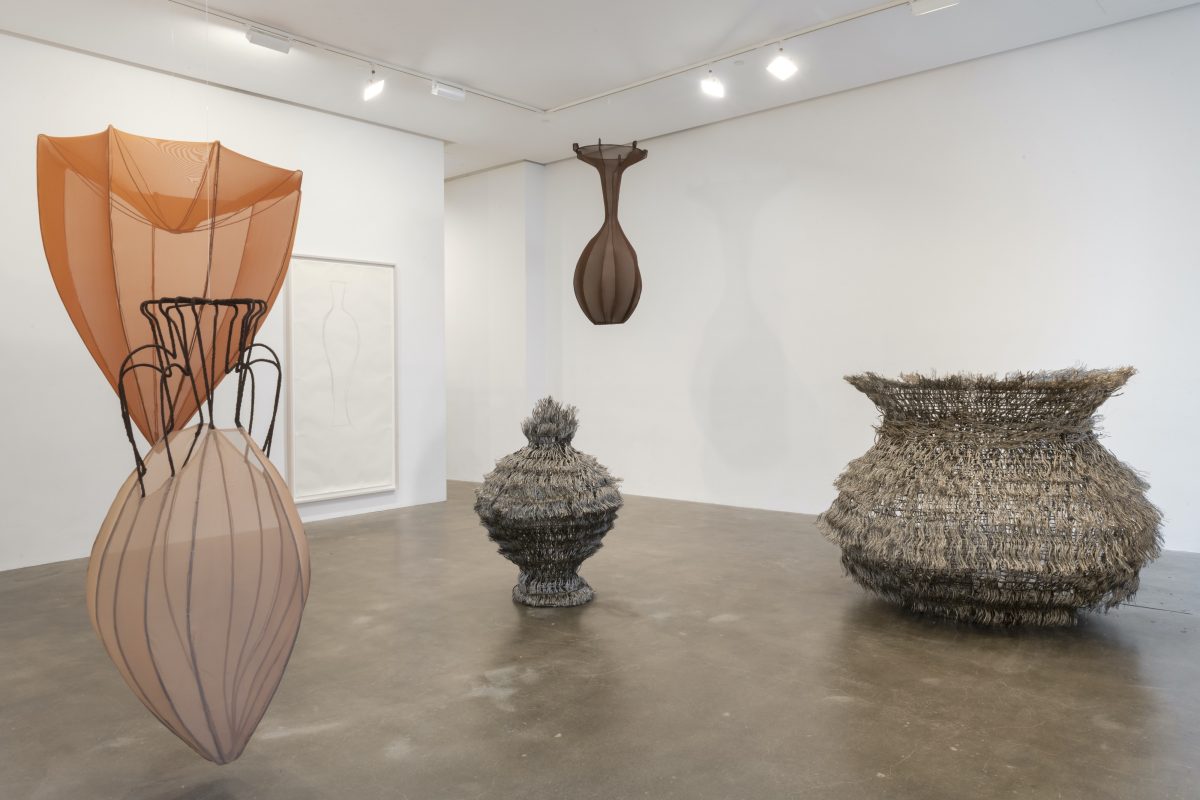
In We Are All Vessels, sculpture and dance coalesce with the infinite possibilities of pedagogy and feminist art. For the artist Maren Hassinger, “vessel” carries differing connotations: women and reproduction, storage and memory, and the ancient art of pottery. Rooted in the aesthetics of the human body and its environment, all of these associations inform — but never overdetermine — the works now on view at Susan Inglett Gallery, all realized by Hassinger and her former students.
In the main gallery, Hassinger’s works are installed incredibly close to one another. Three sheer, vase-like sculptures, each bound in earth-toned fabric, are suspended from the ceiling. “Untitled Vessel (Beige)” (2021) bears the shape of an Ancient Greek vase, paralleled in the “Amphora” graphite sketches hanging on the walls. Hassinger crafted the curvilinear lines of the vase from steel, covering the bottom half in sheer beige fabric. “Untitled Vessel (Red)” (2021) is larger-scale and suspended from the ceiling at eye level, meeting our gaze. I peer directly through it, taking in the other sculptures through the tinted lens of the terracotta-red fabric. The suspended sculptures sway gently with each breeze from the opening of the gallery door. Their precarity — hanging from a translucent rope or otherwise easily moveable — challenges our assumptions of vessels as highly durable.

Two works, made solely from steel wire rope, are rooted to the ground nearby. Hassinger’s fondness for this particular steel material arises from its fiber-esque and ecological aesthetic, which contrasts with its sturdy and industrialized nature. “Untitled Vessel (Large Body)” (2021) and “Untitled Vessel (Small Body)” (2021) sprout from the ground, resembling grasses, trees, or the unraveled edges of a Black woman’s braids. Their familiar forms belie their bewildering materiality: are they flexible or rigid? Sharp or dull?
Hanging in a nearby office, visible from the hallway, two photographs, “Tree Duet I” (1974/2021) and “Tree Duet II” (1974/2021) portray a young Hassinger moving gracefully, echoing the forms of the numerous tree branches framing the surroundings of her 1974 studio, photographed by Adam Avila. The moving contours of Hassinger’s body flow in dialogue with the swaying and rooted forms of the sculptures.
In this context, viewers become participants in this embodied dialogue. Perusing the exhibit along the narrow paths between works sparks unease (fear of bumping into the art) along with a sense of intimacy, especially in the era of social distancing.

Near the front desk and in a smaller gallery next to the main space, we are ushered into the world of Hassinger’s pedagogy through the inclusion of works by her former students: Catherine Feliz, Joshua Leff, and Bat-Ami Rivlin. For the exhibition, Hassinger asked each to meditate on the notion of the vessel, eroding the hierarchy between artists of different generations. The results are poetic, Minimalist creations: a tube-like, paper mache sculpture; a conceptualist trash bag; and small-scale fabric-clad wire cups — all of which are vessels that can transport meaning and material. In an art world that often prioritizes individualism over collectivism, it is invigorating to witness an exhibit shine equal light on Hassinger’s role as an educator. Perhaps the gallery space itself is a vessel: a womb-like space that births both collaboration and spectatorship.
Maren Hassinger: We Are All Vessels continues through June 12 at Susan Inglett Gallery ( 522 West 24th Street, Chelsea, Manhattan).
0 Commentaires